There are any number of reasons why you may need to change the locks at home. Maybe you have lost your keys or want to prevent an ex partner from getting in. The easiest lock to change is what is commonly called the Yale lock or barrel lock.
This lock is actually called a night latch and the whole assembly does not need to be changed as the internal working latch, barrel or cylinder, can be changed independently of the rest of the mechanism. This allows you to use a new key which after all is the usual purpose of changing locks.
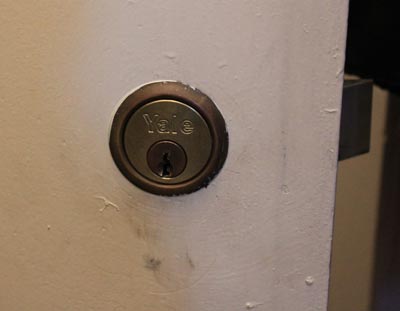
Front view of Yale lock
Changing or Replacing a Barrel Lock
The images below show the sequence involved in changing a yale lock or night latch cylinder and they should be used with the following instructions.
At the back of the door you will see the lock box. This is held on by two screws which are located above and below the actual door latch. Release these screws completely and put them somewhere safe. You will then be able to wiggle off the lock box.
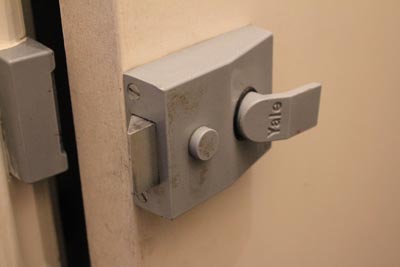
Rear view showing lock box
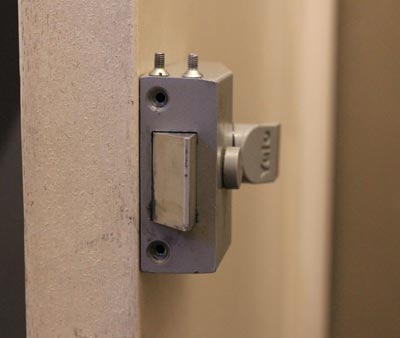
Screws holding lock box onto back plate
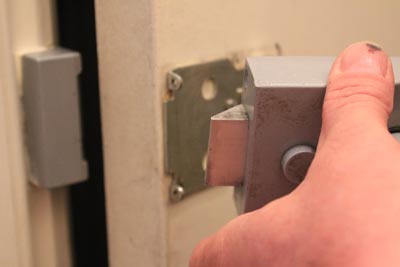
Removing rear lock box from back plate
When the lock box is removed you will see the locks back plate. This is the plate which holds the whole lot to the door.
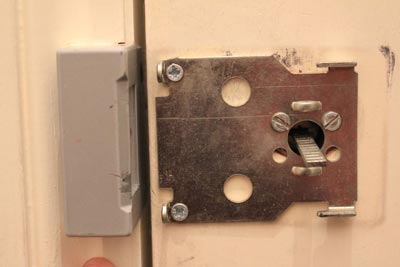
Back plate fixed to door
Sticking out of the back plate you will see a thin bar with grooves across its width. This is called the shank. Above the shank and to either side of it are two screw heads, usually brass, which hold the barrel or cylinder to the back plate (seen in the above image).
Unscrew these screws and put them with the lock box screws (seen in below image). You should then be able to pull the barrel or cylinder out of the door.
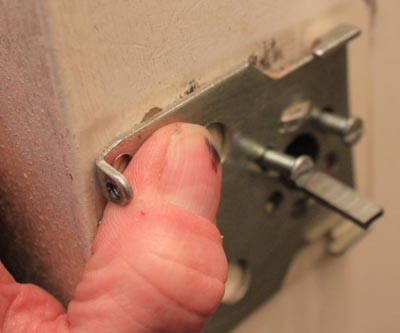
Un-screwing bolts holding lock barrel to back plate

Barrel removed and showing how it’s fixed to back plate through the door
Take a new barrel or cylinder from the packet and lay it alongside the one you have just taken out. Measure the length of the shank and using a strong pair of pliers and a hacksaw, cut the new shank to the same length as the old. The grooves which are already partially cut in in the shank are there to help you.
When you have sawn a little way through the shank you should be able to bend it downwards to allow the shank to split in the correct place.
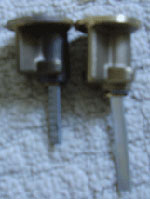
Compare old to new barrel and cut off shank of new lock to the same length as the old one
Re–assembling a Barrel or Yale Lock
Re assembling the lock is now a direct reversal of the procedure you used to dismantle it. Push the new cylinder or barrel back through the door and screw it to the back plate using the long screws you took out. Then slip the lock box over the shank and wiggle it back into place over the shank and back plate. Finally screw the lock box back on using the side screws you took out first.
Changing the cylinder or barrel of a night latch is an easy operation but remember to take your time to do it correctly. If you make a mistake it may mean leaving the door unlocked while you go to buy a new cylinder and this is just the opportunity thieves are looking for – an open door!

